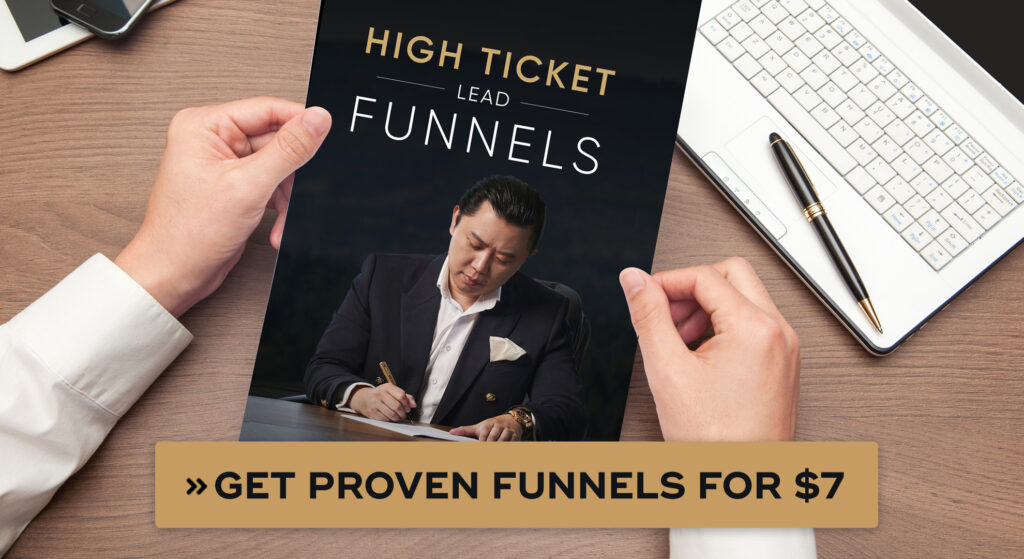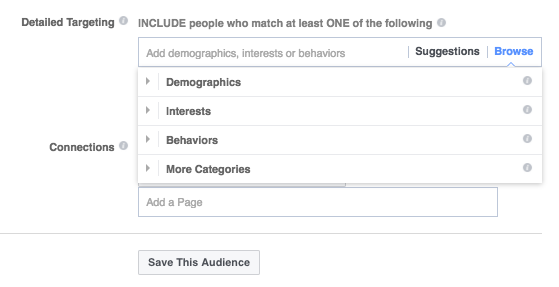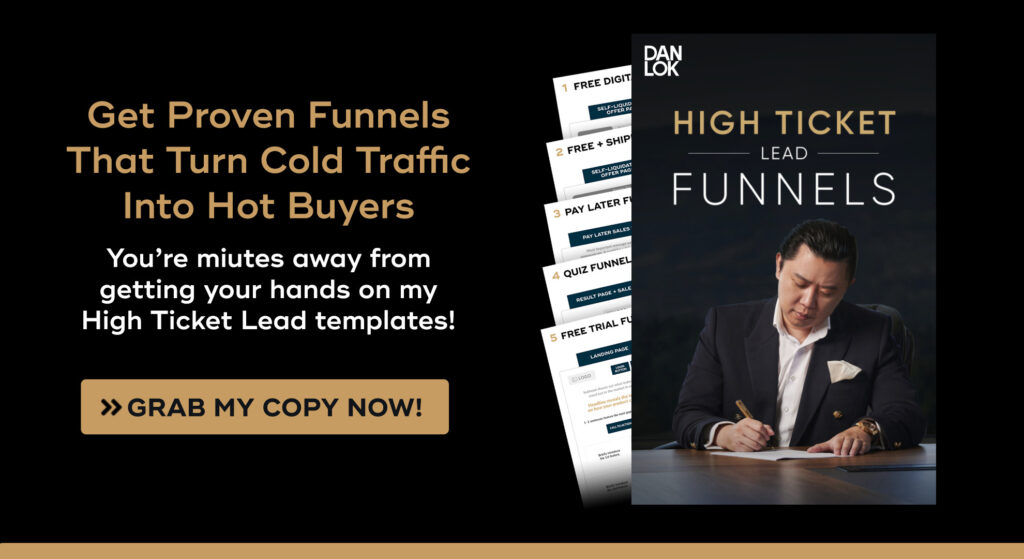If you are a business owner selling high ticket products or services and have been running ads, you’ve experienced this.
Your ad budget vanishes into thin air with high Cost Per Acquisition (CPA).
Fear not, we’re about to embark on a journey to improve ROAS and propel your business to new heights!
Table of Content
- Refine Audience Targeting and Utilize Meta Technologies
- Optimize Ad Creatives
- Execute Bid Strategies Smartly
- Deploy Retargeting
- Conclusion
Are you ready to Combat High CPA and improve ROAS? Let’s dive in now.
This blog shows how to maximize your ad profits…but having a great offer means nothing without a convincing sales funnel!
Get my High Ticket Lead Funnels to access the best-performing, easy-to-use funnel templates designed specifically for your ads.
I. How to Improve ROAS with Audience Targeting and Utilize Meta Technologies
Picture this: You’re selling high-end fitness gear. Now, who’s more likely to whip out their wallet – a couch potato or a gym enthusiast?
Exactly! By narrowing down your target audience, you’re not just shooting in the dark; you’re aiming straight for the people most likely to buy.
Alright, let’s dive into how you can make your audience targeting razor-sharp with Meta Ads. Here are 4 practical strategies that will help you reach the right people with your ads.
If you are not sure what your target audience persona is. Check out this blog.
1. Leverage Detailed Targeting Options:
- Utilize Interest Overlays
Instead of relying solely on broad categories, drill down into specific interests that are relevant to your target audience.
For example, if you’re promoting a fitness app, rather than targeting the broad category of “fitness enthusiasts,” narrow it down to interests like “yoga,” “running,” or “weightlifting.” - Combine Demographics with Interests
By combining demographic information with interests, you can create highly targeted audience segments. For instance, if you’re marketing a skincare product for men, you can target men aged 25-40 who are interested in grooming and skincare. This ensures that your ads are reaching the right audience with the highest potential for conversion.
2. Utilize Custom Audiences
A custom audience is an ad targeting option that lets you find your existing audiences among people across Meta technologies.
- Create Your Lists
With custom audiences, you can target people who have already interacted with your business in some way, whether it’s by visiting your website, engaging with your Facebook page, or your existing customer lists. Some CRM tools such as Hubspot or workflow automation tools like Zapier can send the custom audience automatically.
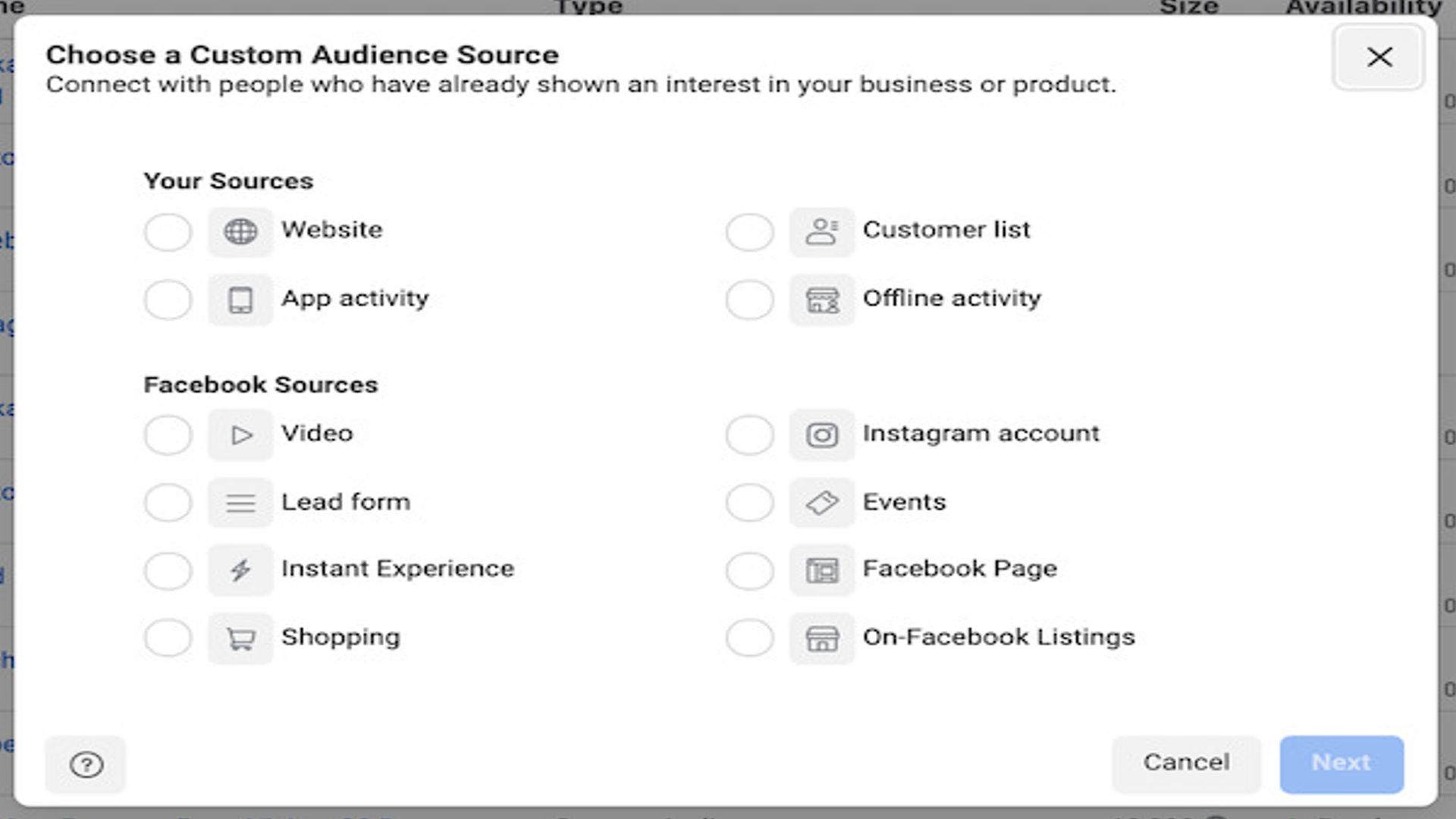
- Segment Your Audience
Break down your custom audience into groups using different factors such as purchase history, engagement level, or demographic information. This allows you to tailor your ads more effectively to different audience segments, ensuring that you’re delivering the right message to the right people at the right time. - Explore Lookalike Audiences
Now that you’ve unlocked the power of custom audiences, let’s kick it up a notch with lookalike audiences. Meta gathers lookalike audiences, which is based on your custom audiences. It means let Meta find potential clients for you.
One more practice you must try after generating a series of lookalike audiences. It is to optimize effectiveness on finding better audiences.
Step 1. Deliver identical ads to all lookalike audiences with initial bids.
Step 2. Evaluate ad performance based on revenue per conversion or the lifetime value of individuals in each audience.
Step 3. Adjust bids for each audience according to your findings, allocating higher bids to more valuable audiences and lower bids to less valuable ones.
3. Refine with Audience Insights:
Use Meta’s Audience Insights tool to gain valuable insights into the demographics, interests, and behaviors of your target audience.
This information can help you refine your targeting even further and tailor your ads to better resonate with your audience. Whether it’s tweaking your messaging or adjusting your targeting parameters, Audience Insights gives you the data you need to make informed decisions and maximize the effectiveness of your ads.

Don’t let average funnels waste your valuable ad dollars!
My High Ticket Lead Funnels ensure your sales message stays consistent from ad to funnel for maximum conversions. With these proven, fine-tuned funnel templates, your creatives slot in seamlessly to turn red-hot prospects into paying customers on autopilot. Easy plug-and-profit solution!
II. How to Improve ROAS with Creatives Optimization
Ad creative is the first thing your audience sees and what grabs their attention so you should always make it the best. Think of it like a handshake – it’s your chance to make a great first impression.
Compelling visuals and persuasive copy can draw people in, spark their interest, and ultimately drive them to take action. So let’s dive in and uncover how to create ad creatives that captivate and convert!
1. Craft your ads in optimal formats.
- Provide High-Quality Images and Videos
Let’s ensure your ads shine bright! Opt for sharp, high-quality images that truly reflect your message. Offer Meta a variety of ad formats to guarantee your visuals look stunning across different devices. Common sizes include 1920×1080, 1080×1080, 1080×1920, and 1350×1080.
- Craft Eye-Catching Graphic
Jazz up your visuals! Think vivid hues, strong fonts, and captivating pictures. Picture bold product shots, lively drawings, engaging charts, and lively animations. Adding contrasting colors, innovative layouts, and eye-catching effects amps up the appeal and impact of your graphics.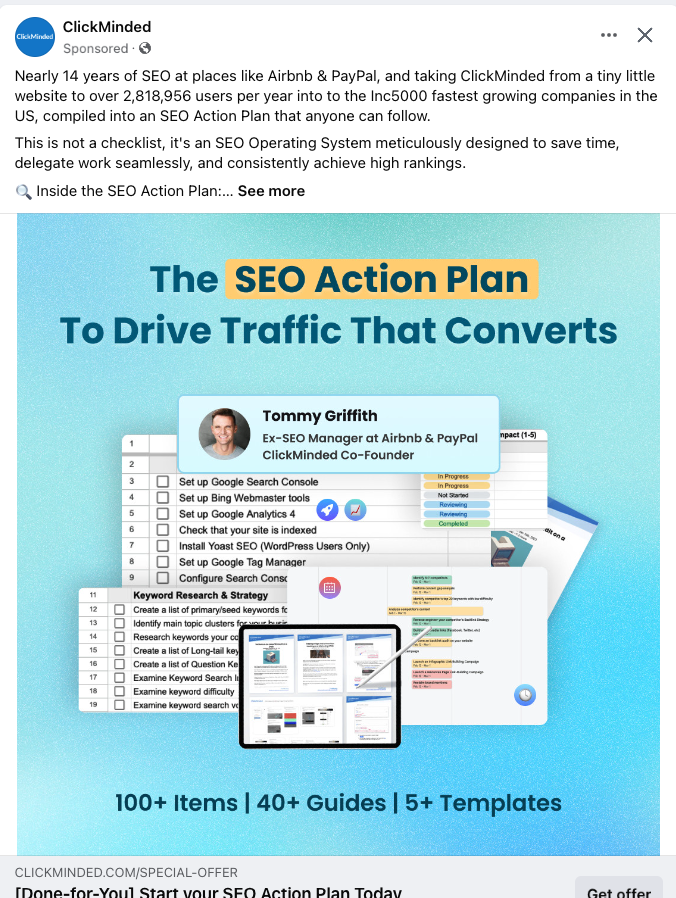
ClickMinded. The image lists out what is included and the one sentence to solve the pain.
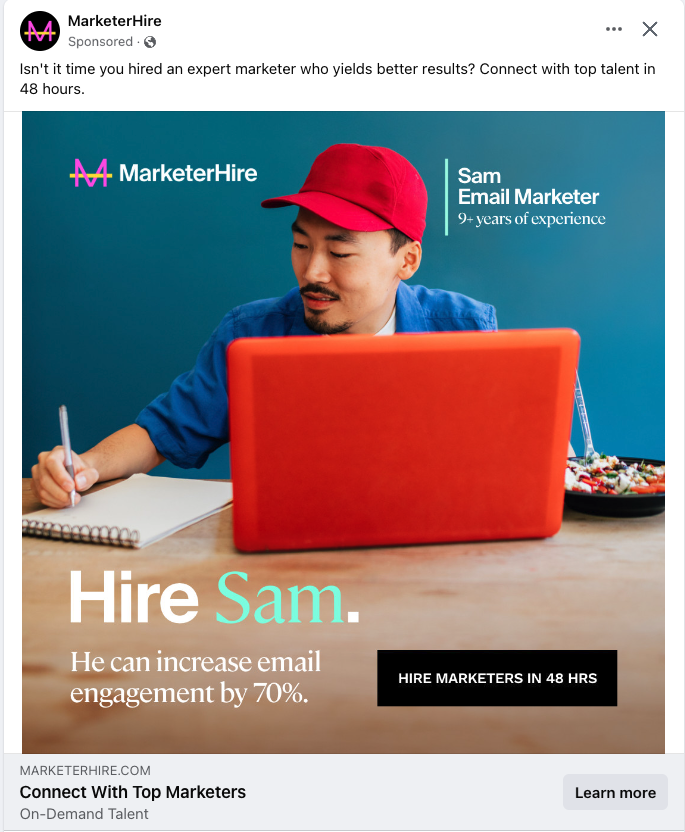
MarketerHire. The image shows all the solid numbers and it’s well designed.
- Keep Video Captivating
Short attention spans call for concise video ads. The first 3-5 seconds of the video must grab attention. Especially with the visual aspects since many people watch with audio off. Keep the video length under 90 seconds for the vertical video dimensions so Meta can place it in more placements.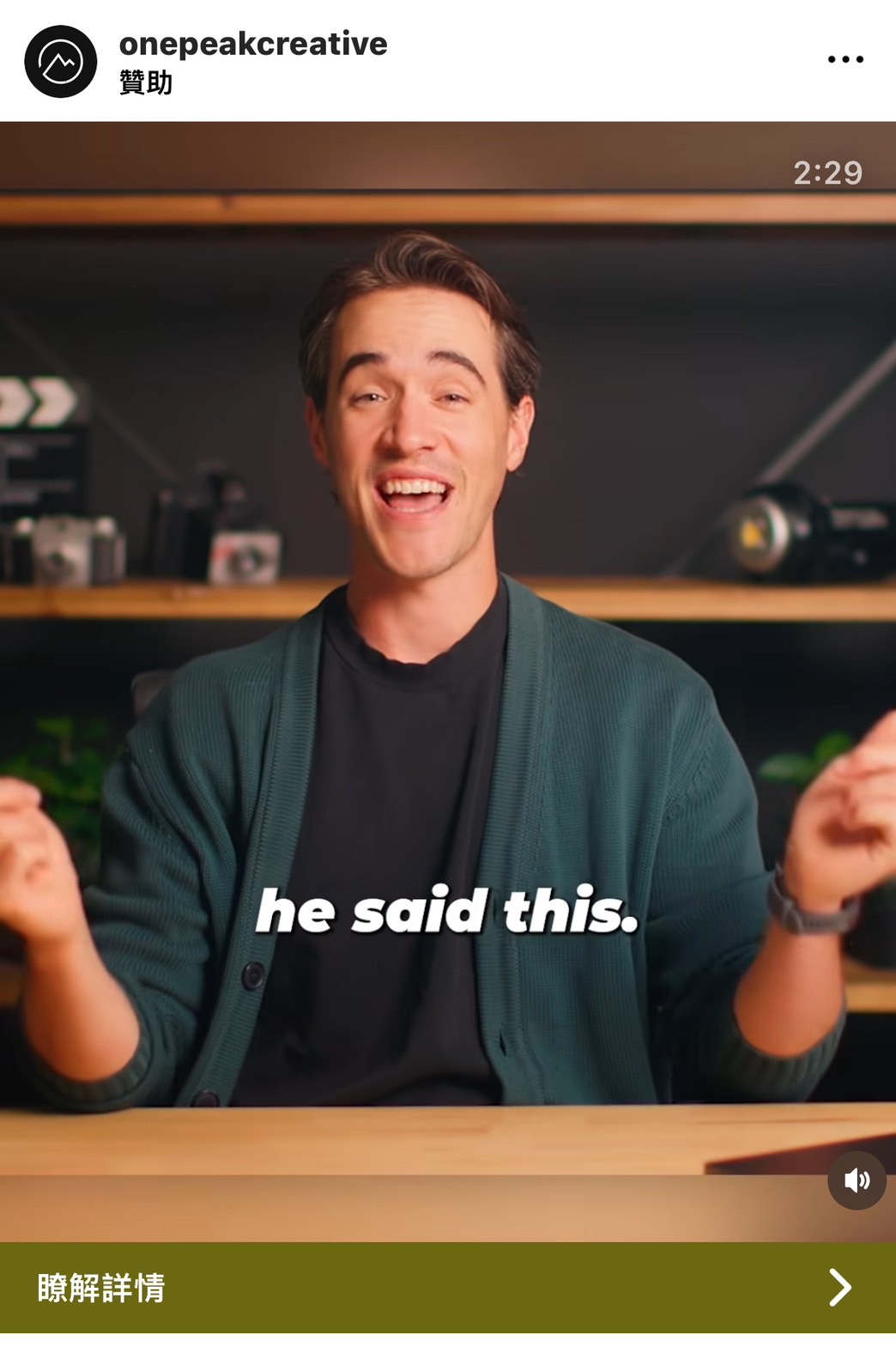
Onepeakcreative. Add subtitles for people who don’t turn on audio.
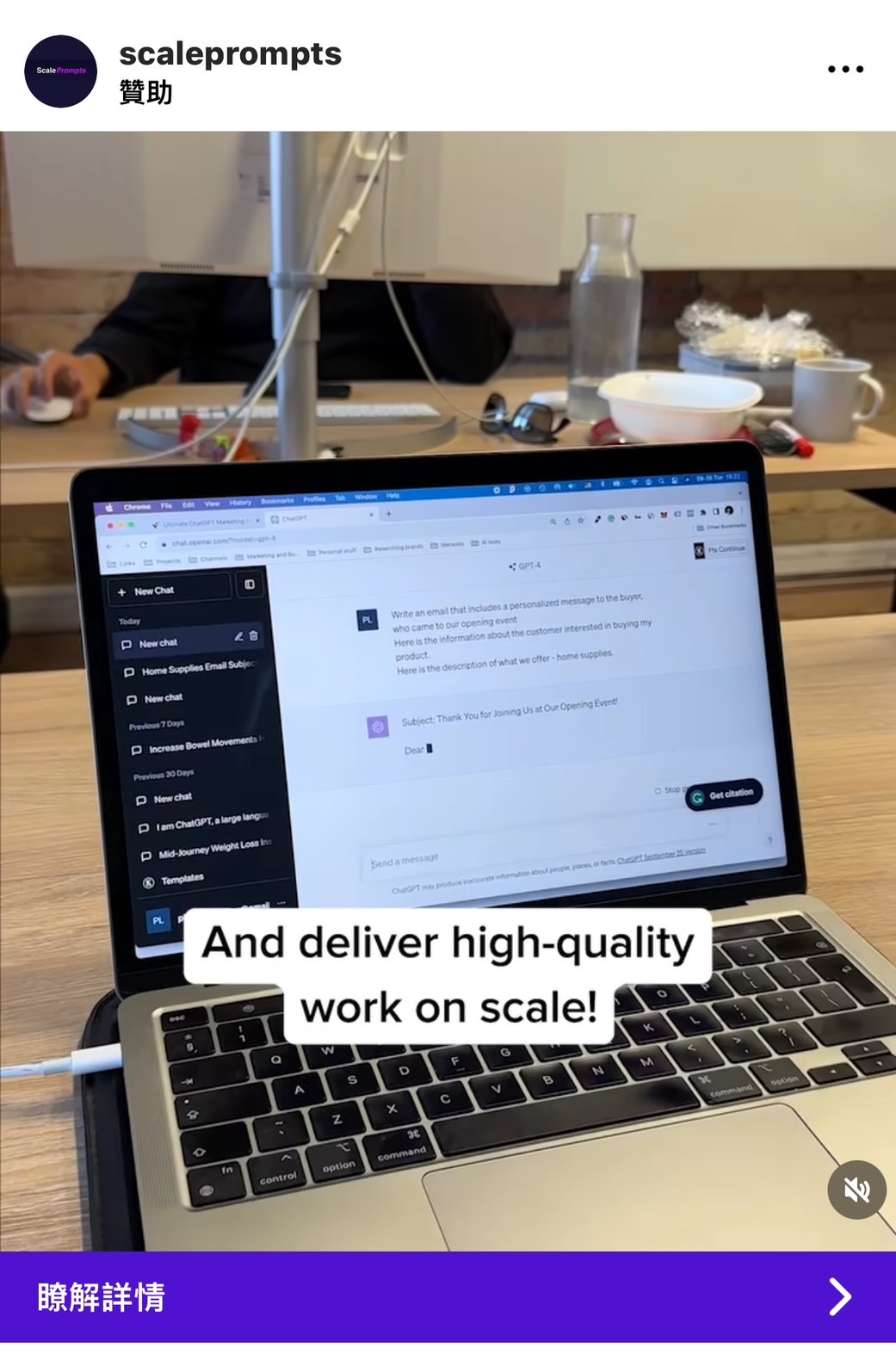
Scaleprompts. Put important information in the caption.
2. Feature the most captivating and attention-grabbing content.
- Explore Your Competition
Review your competitors’ ads and marketing tactics. What creative approaches do they employ? Which messaging and visuals yield results? Use these insights to inspire your own innovative concepts. Check them out here. - Tap into Emotions
Harnessing emotions in your ads can deeply resonate with your audience, sparking genuine connections and driving action. Let’s dive into how to craft compelling stories that inspire and engage your potential clients. - Craft Compelling Stories
Share narratives that mirror the dreams and struggles of your target audience. For instance, a career coach might recount a client’s journey from career dissatisfaction to finding fulfillment after coaching. - Feature Real-Life Stories
Highlight testimonials from satisfied clients who have benefited from your services. Showcase their progress and successes to evoke emotions and establish credibility.
For example, a financial advisor could spotlight clients who achieved financial stability through their advice.
- Use Symbolic Imagery
Incorporate visual metaphors that represent the desired outcomes of your services. For instance, a life coach might use images of paths leading to summits to symbolize personal growth. - Enhance with Sound
Select music and sound effects that amplify the emotional impact of your ads. Consider uplifting tunes or motivational sounds to inspire your audience. For instance, a wellness coach could use soothing nature sounds for relaxation. - Address Pain Points
Highlight common challenges faced by your audience and present your services as solutions. For example, a business consultant could showcase how their strategies overcome business hurdles.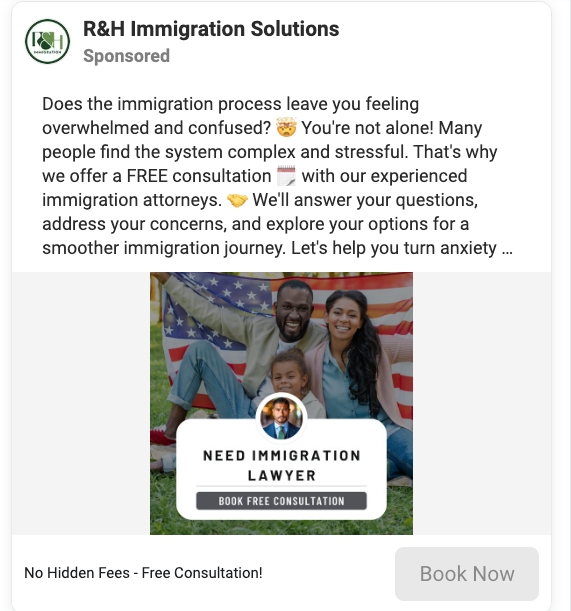
R&G Immigration Solutions
- Foster Community
Celebrate shared experiences and values to create a sense of belonging. For example, a leadership coach could highlight client achievements, fostering a supportive community.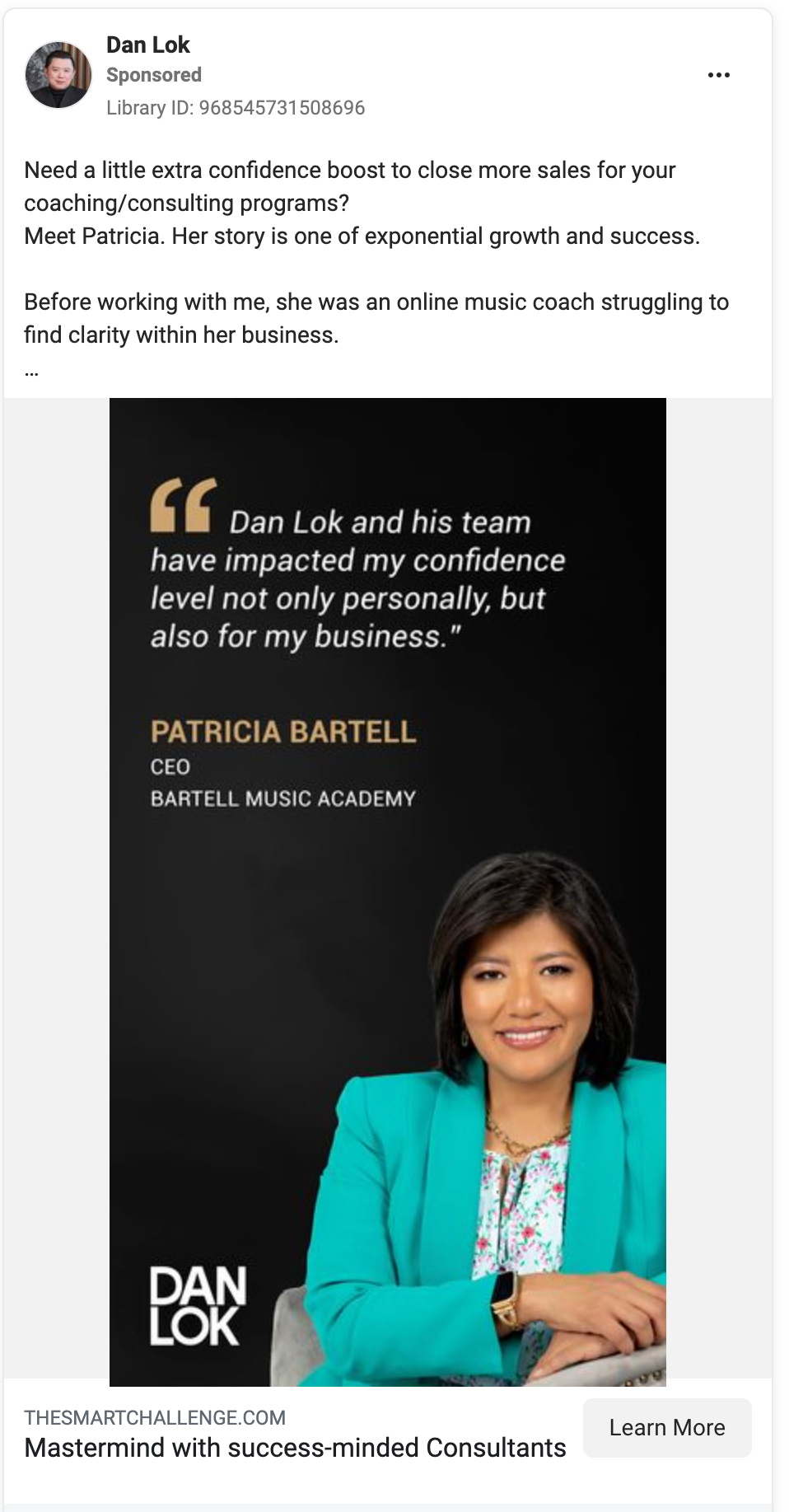
Dan Lok.
- Spotlight Unique Selling Points
Identify what makes your service stand out—its unique selling points (USPs). Showcase these USPs creatively, emphasizing their benefits and value proposition to engage your audience effectively.
- Highlight Specialized Expertise
Emphasize your distinctive qualifications or specialized skills that distinguish you. For example, a career coach could underscore their HR background, demonstrating insider industry knowledge. - Focus on Achievements
Showcase tangible results clients can achieve through your services. For instance, a fitness coach could display transformational before-and-after images of clients.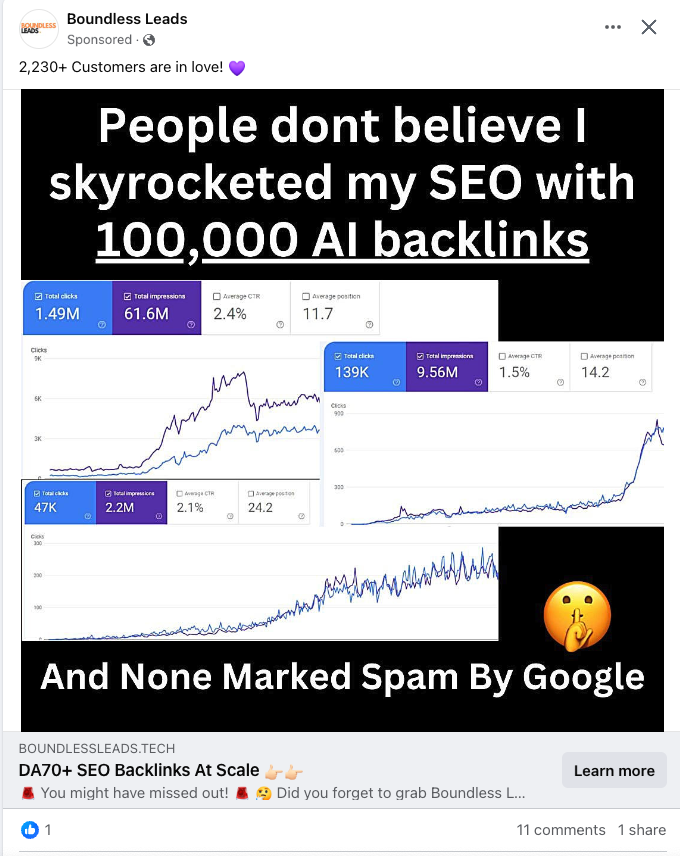
Boundless leads. It shows the real metrics to prove achievements.
- Offer Tailored Solutions
Highlight your ability to customize services to meet individual client needs. For example, a marketing consultant could tout personalized strategies based on thorough audience analysis.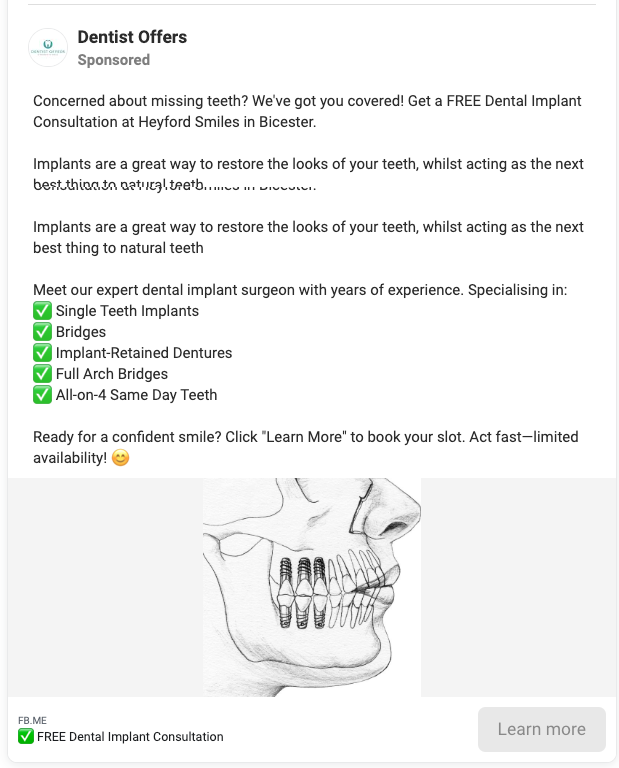
Dentist Offers
- Present Client Successes
Share client testimonials to validate the effectiveness of your services. For example, a business consultant could feature case studies demonstrating successful outcomes. - Promote Unique Methodologies
Highlight proprietary techniques that set your services apart. For example, a productivity coach could promote their unique time management system.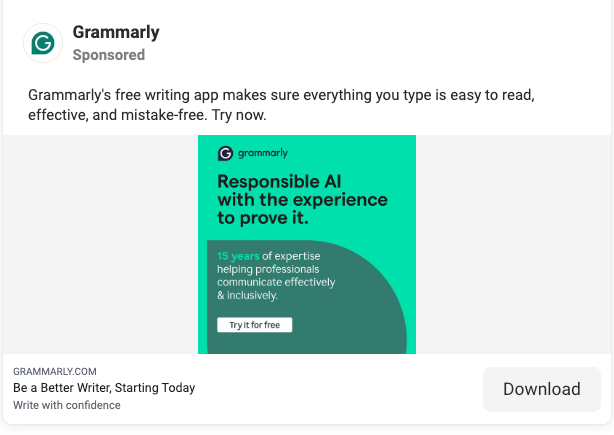
Grammarly. The ad shows 15 years experience and AI utilization.
- Offer guarantees or risk-free trials to instill confidence.
For example, a financial advisor might offer a free initial consultation.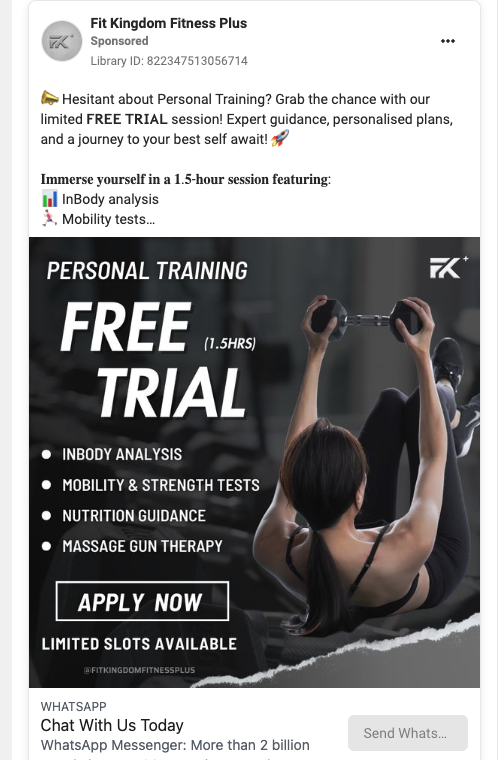
Fit Kingdom Fitness Plus.
- Clarify Value Proposition
Clearly articulate the benefits of your services and how they address client challenges. For example, a leadership coach could stress their focus on developing leadership skills.
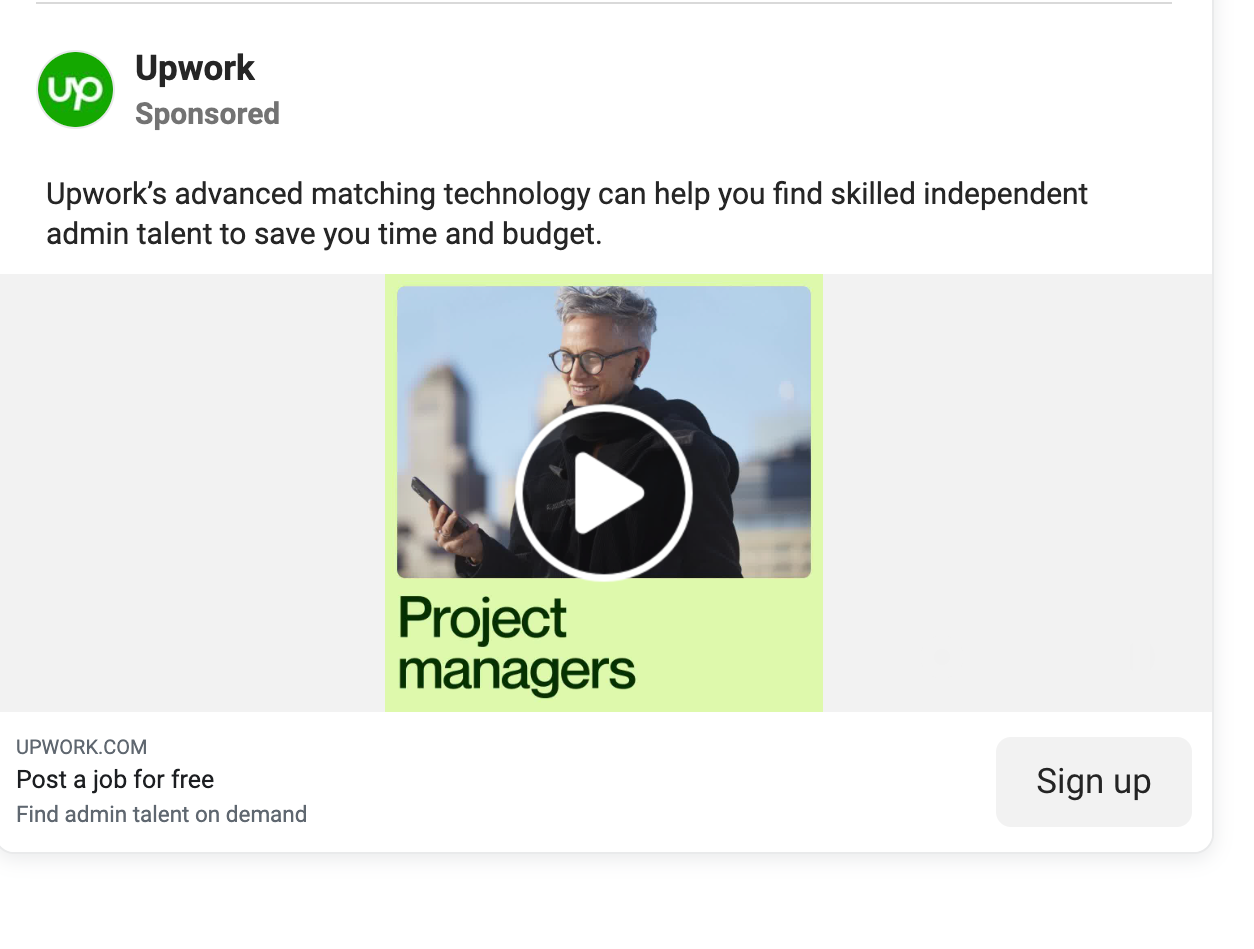
Upwork
- Showcase Recognition
Highlight industry awards or accolades to bolster credibility. For example, a legal consultant could mention industry publications where they’ve been featured.
Maria Sophocles
- Experiment with Different Formats
Try out various ad formats like static images, videos, carousels, and interactive ads across different platforms. Test them to find which ones connect most with your audience and prompt the desired response.
- Think Outside the Box
Feel free to get creative and think outside the box. Explore humor, storytelling, user-generated content, or interactive features to grab attention and connect with your audience in fresh and unexpected ways.
- Test and Iterate
Let’s put your creative ideas to the test! Use A/B testing and analytics to measure which ones resonate most with your audience. Begin testing with a small audience or budget to minimize risk and gather initial insights before scaling up.Then, refine and optimize based on the results to continuously improve your ad performance.
Got amazing ads that attract leads?
Don’t let bad funnels waste those hot leads! My High Ticket Lead Funnels bundle 5 proven funnel templates proven through $20 million in ads spend. Just plug in your content and watch these easy-to-use funnels effortlessly convert window shoppers into paying customers.
III. How to Improve ROAS with Smart Bid Strategies
1. Understand Bid Strategies
Harnessing bid strategies in ads is crucial for optimizing budget allocation, ensuring efficient spending, and maximizing campaign performance, ultimately driving better results and ROI.
- Highest volume
Meta makes the most out of your budget, striving to achieve the maximum number of results possible. For instance, a consultancy firm hosting a series of webinars might utilize this strategy to attract as many attendees as possible, regardless of the cost per registration.
This strategy is ideal if you
Want to exhaust your entire advertising budget effectively.- Seek to attain the highest possible number of results within your budget constraints.
- Do not have a specific target cost per action (CPA) in mind.
- Highest value
When employing the highest value bid strategy, Meta’s goal is to exhaust your budget while bidding for purchases with the highest potential values.
For instance, a consultancy firm offering specialized coaching services might utilize this strategy to promote premium coaching packages, aiming to maximize the value of conversions, thereby enhancing the return on ad spend (ROAS).
This strategy is suitable if you- Wish to optimize for the value of conversions rather than solely focusing on increasing the number of conversions. Intend to spend your entire budget while prioritizing higher-value purchases.
- Cost per result goal
In this strategy, Meta aims to achieve your specific goal amount on average throughout the campaign, dynamically adjusting bids to maximize results. This means that the average cost per result may sometimes exceed the set amount. For instance, a coaching company aiming for consultation bookings may set their cost amount to a target cost per booking that ensures profitability on average.
This strategy is suitable if you- Prefer to maintain your cost per action (CPA) around a specified average, regardless of market fluctuations.
- ROAS Goal
When you set a return on ad spend (ROAS) goal, Meta strives to achieve it throughout your campaign, adjusting bids dynamically to maximize results. This bid strategy requires optimizing your ad set for purchase value. For instance, if you want your $100 budget to yield at least $110 in purchases (or a 110% return), you’d set your ROAS control at 1.100.
This strategy is ideal if you- Aim to maintain your return on ad spend around an average amount throughout your campaign.Require more control over the purchase value generated from ads compared to the highest value bid strategy.
- Bid cap
When you opt for bid cap, Meta sets a maximum bid across auctions instead of bidding dynamically based on your cost or value objectives. This strategy suits advertisers who have a good grasp of predicted conversion rates and can calculate the right bid. For example: A career coaching company has analyzed its client data and found that each successful career transition leads to an average lifetime value of $5,000. With this knowledge, they decide to cap their bid at $500, ensuring they don’t overspend while still acquiring valuable clients.
This strategy is ideal if you
-
- Rely on internal bidding or lifetime value models.
- Prefer to control the maximum bid Facebook can place in auctions.
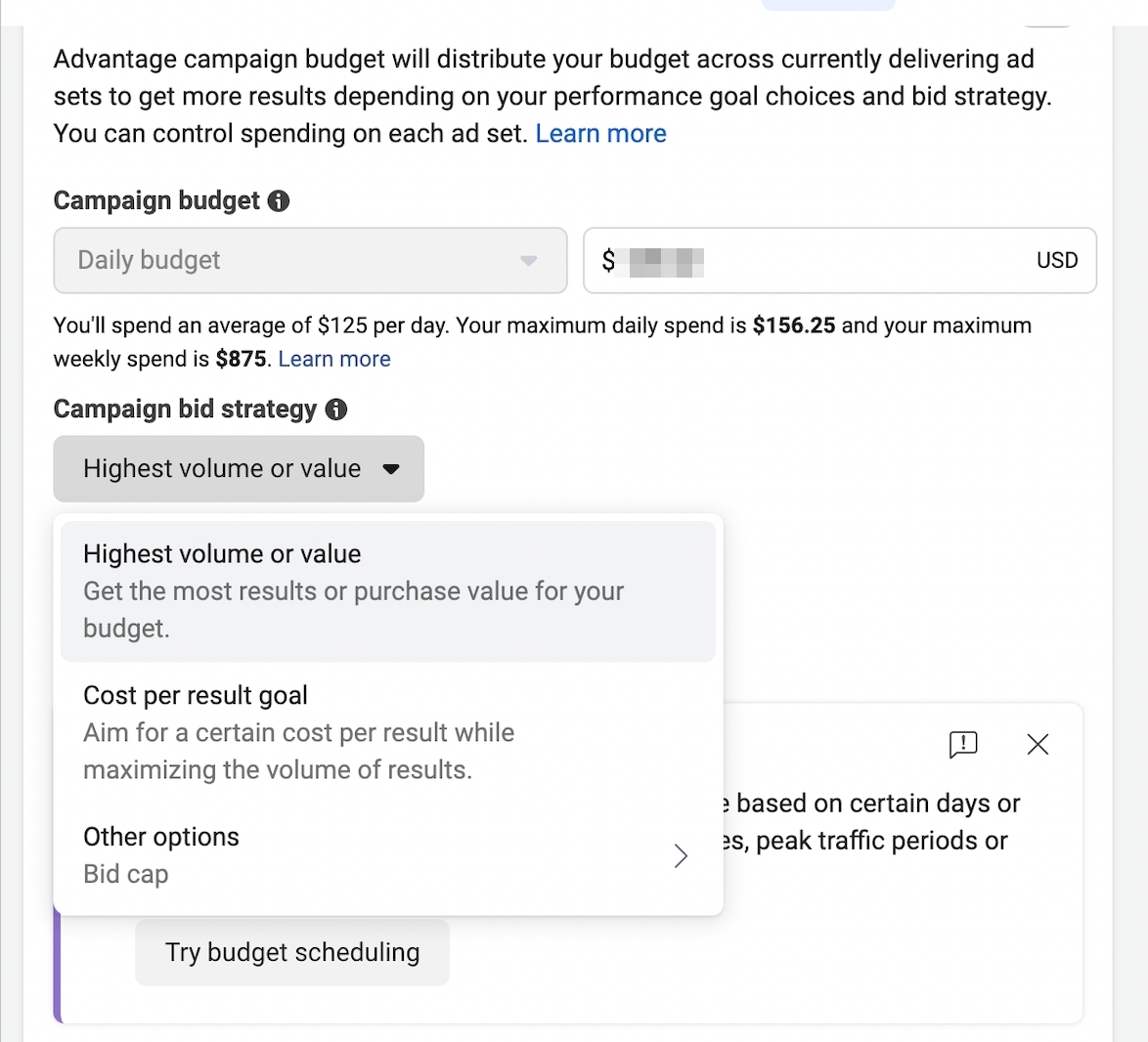
2. How I implement effective bidding
Let’s dive into how I approach bid strategies in my campaigns. When I kick off a new campaign, I usually begin with “Highest Volume or Value” bidding. I gradually increase the budget until I notice the CPA becoming too high. This gives me a sense of the campaign’s CPA. It’s important to factor in your profit margin when determining the CPA that works for you.
Once I’ve identified the optimal CPA, I clone the campaign and run it with “Cost Per Result Goal” bidding with the desired CPA in mind. I run the same ad creatives concurrently on both “Highest Volume or Value” and “Cost Per Result Goal” bidding strategies. This allows me to compare and fine-tune the performance effectively.
Why do I run two ad campaigns? I stick with the proven one and add a second with Cost Per Result Goal bidding to boost lead opportunities. It’s all about balancing ACV and CPA. If ACV exceeds CPA, you’re gaining clients without spending a penny.
Throughout the campaign, I closely monitor performance metrics and make adjustments to the budget or creatives as needed, usually in increments of $5-$10. If I’m approaching an important event or aiming for better results, I might increase the spending slightly. The key is to consistently track metrics and adapt the strategy accordingly.
IV. Utilize Retargeting
Retargeting ads are targeted advertisements shown to users who have previously interacted with you. They serve as reminders to potential customers, encouraging them to revisit the site or complete a desired action. Retargeting is crucial as it keeps your brand top-of-mind, re-engages interested users, and increases the likelihood of conversions by reaching audiences already familiar with your offerings.
1. How I Work with Retargeting Ads
Firstly, make sure your custom audience setup is complete. Refer to the previous sections for guidance. Once everything’s set up correctly, I segment my retargeting audience into three tiers.
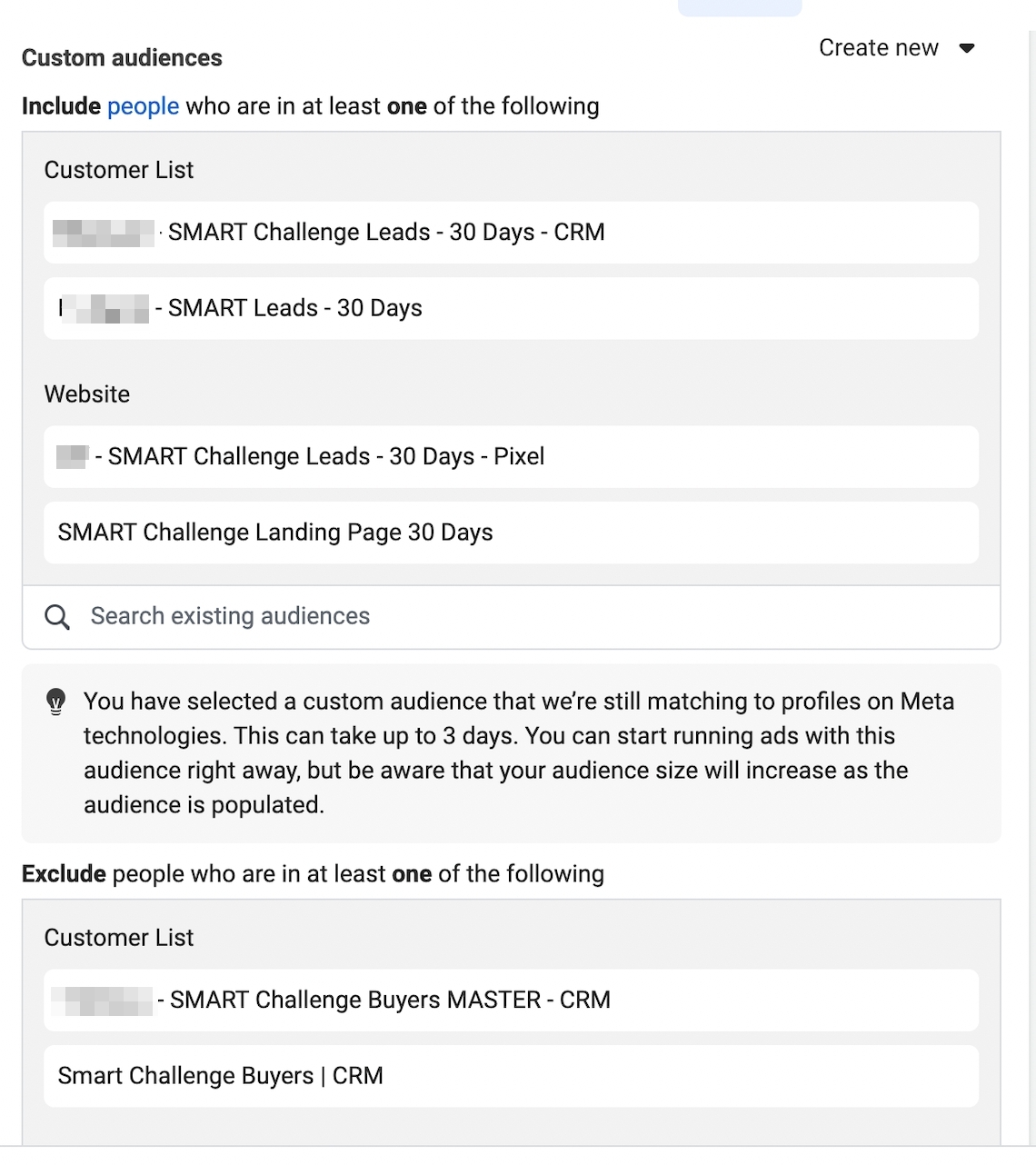
- Tier 1
These are the folks who’ve engaged with my website or pages. They’re like a medium-rare steak. They need a bit more attention, so I show them ads offering a free download lead magnet with an OTO (One Time Offer). This helps me collect their email addresses to add them to my list.
- Tier 2
These are the ones who’ve downloaded the lead magnet but haven’t purchased the OTO yet. They’re like a medium-cooked steak because they’ve consumed some of my content. For them, I run ads promoting something like the latest event, but I do it gently. I use sophisticated approaches to guide them to click the call-to-action button. I don’t assume they know everything, so I avoid being too pushy.

- Tier 3
These folks are either my customers or have visited the sales page for the product I’m advertising. They’re like a medium-well steak, almost ready. The ads I show them include testimonials, event posters, or anything that can give them that final push to make a purchase.
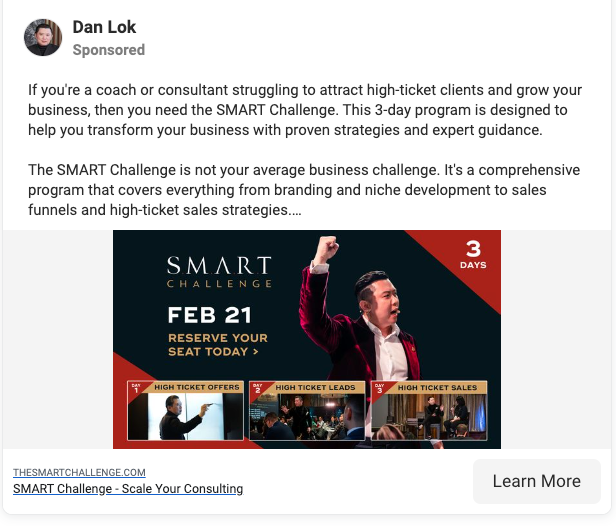
2. Some More Retargeting Campaigns
By segmenting your audience and delivering relevant messages, you can effectively re-engage users and drive them towards conversion.
- Abandoned Cart Retargeting
A SEO coach notices that many users add a digital course package to their cart but abandon it before completing the purchase. They retarget these users with ads reminding them of the benefits of the coaching package and offering a limited-time discount to encourage them to complete the purchase.
- Email List Retargeting
A service provider wants to reach users who are already subscribed to their email list but haven’t taken any further action. They retarget these users with ads offering exclusive content or early access to new services to incentivize them to engage further.
- Cross-Sell or Upsell Retargeting
A coach identifies users who have purchased one coaching package and retargets them with ads promoting complementary or advanced coaching programs. - Geo Targeted Retargeting
A service-based business targets users who have visited their physical location but haven’t made a purchase. They retarget these users with ads offering a special discount for in-store visits or online purchases.
V. Conclusion
Remember this: reclaiming your ROAS and propelling your business to new heights is within reach. We’ve explored solid strategies to refine audience targeting, optimize ad creative, implement bid strategies, and utilize retargeting.
